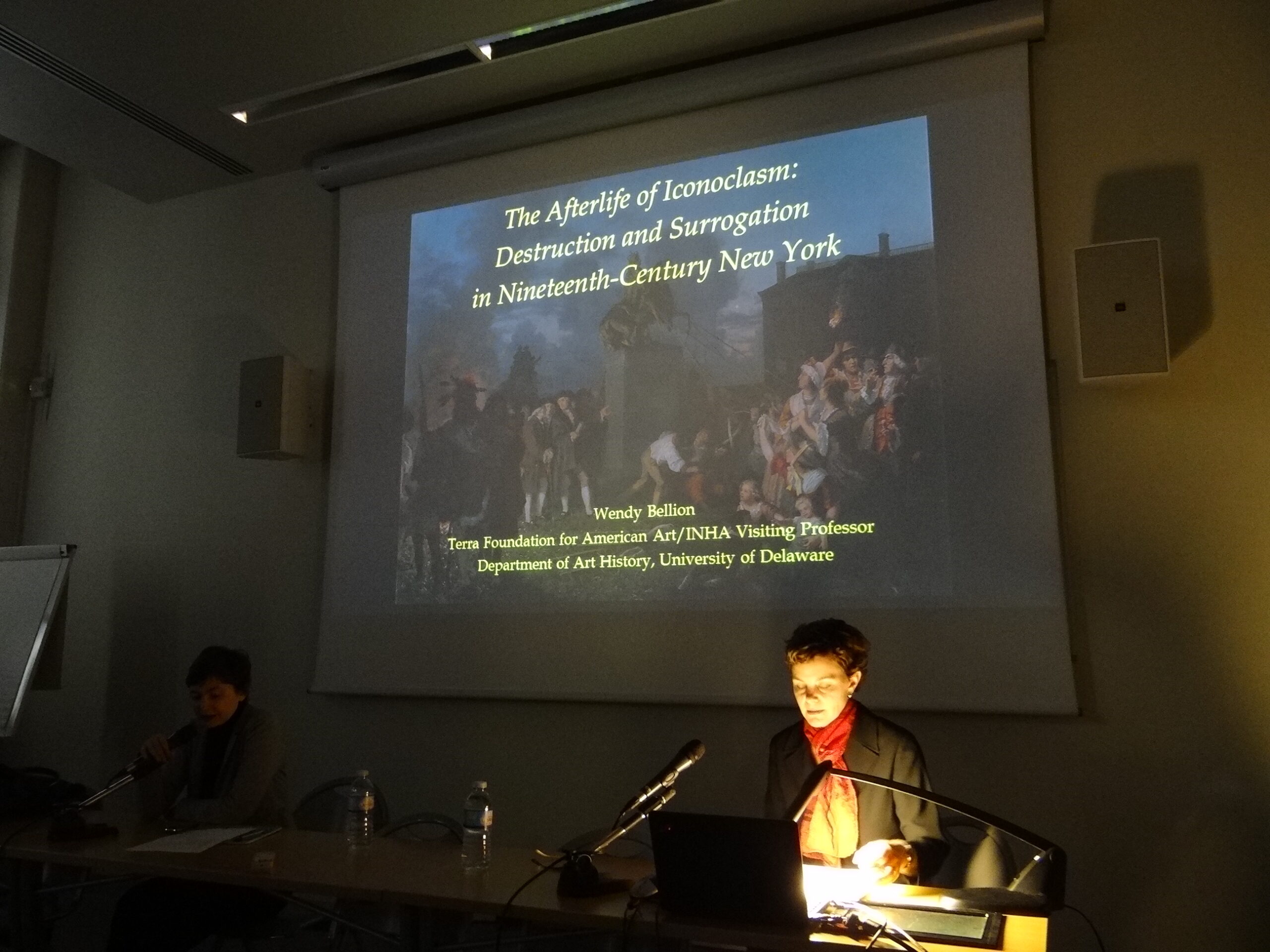March 31, 2015
Institut National d’Histoire de l’Art, Paris
In 1770 colonial New Yorkers raised a gilded, lead, equestrian statue of the British monarch George III. In 1776 they violently destroyed it. Following a reading of the Declaration of Independence, a crowd tore the statue from its tall pedestal, scratched gold from its surface, dragged its parts through the streets, and eventually boiled it down into bullets for the Continental army. Yet if the statue was gone, it was hardly forgotten. Between the late eighteenth and early twentieth centuries, the tale of the statue’s destruction was endlessly retold in paintings, prints, poems, and historical texts—and even re-enacted as part of civic parades and pageants. Examining the relations between iconoclasm and surrogation, this talk explores how practices of visual and performative representation continually reanimated the historical memory of the statue and reinvented the act of negation that destroyed it.
This talk, by Wendy Bellion of the University of Delaware, inaugurates the conference “Erased, Replaced, Omitted, Denied: American Art and Negation,” held on April 1, 2015, at the Institut National d’Histoire de l’Art.


